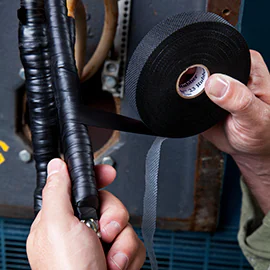Types of Intumescent Strips Enhancing Fire Safety in Buildings
Intumescent strips are crucial components in passive fire protection systems. When exposed to high temperatures, these strips expand significantly to fill gaps around doors, windows, and other openings, thereby preventing the passage of fire, smoke, and gases. Understanding the different types of intumescent strips can help architects, builders, and safety professionals select the right products to enhance fire safety within buildings.
1. Material Composition
Intumescent strips are typically made from materials that undergo an expansion process when subjected to heat. The most common materials include graphite, polymer, and rubber-based compounds. Each of these materials has unique properties that make them suitable for different applications.
Graphite-based intumescent strips are known for their excellent fire-resistant properties and thermal insulation. When exposed to fire, they can expand up to 25 times their original size, forming a protective layer that blocks flames and smoke. Polymer-based strips, often used in residential applications, are lightweight and flexible, making them easy to install. Rubber-based intumescent strips are durable and can also provide sound insulation, making them an excellent choice for commercial buildings.
2. Types of Intumescent Strips
Intumescent strips can be categorized based on their intended use and design. The primary types include
- Fire Door Intumescent Strips These strips are specifically designed for use in fire-rated doors. They are usually installed in the door frame or the door itself and expand when exposed to heat, sealing the gaps to prevent fire spreading through the door opening.
types of intumescent strips

- Window Intumescent Strips Similar to fire door strips, these are applied around windows to maintain the integrity of smoke and fire barriers. They are essential in buildings where fire resistance is required to protect occupants and property.
- Pipe and Cable Intumescent Strips These are used to seal penetrations in walls and floors where pipes and cables pass through. The strips expand to fill the voids, preventing fire from traveling through these openings and compromising the fire-rated barriers.
- Hinged and Undercut Strips Hinged strips are designed to work with doors that do not fully seal when closed. They help to create a tighter seal in the event of a fire. Undercut strips feature a design that allows them to expand and block smoke and flames from coming under doors.
3. Applications
Intumescent strips are widely used in various applications, including residential buildings, commercial spaces, and industrial facilities. The performance of these strips is evaluated based on fire testing standards, such as UL 10C or BS 476, which determine their effectiveness in real fire scenarios.
Moreover, the proper installation of intumescent strips is critical for their performance. It is essential to follow the manufacturer’s instructions and applicable building codes to ensure that fire safety measures are upheld.
Conclusion
Selecting the right type of intumescent strip is vital in ensuring compliance with fire safety regulations and protecting lives and property. As fire safety technology advances, the diversity in intumescent strip types and materials continues to grow, offering enhanced solutions for safeguarding against the devastating effects of fire. By understanding these options, stakeholders can make informed decisions that contribute to safer building environments.
-
XIANGFAN Rubber Tape-Ultimate Solutions for All Your Insulation NeedsNewsJun.24,2025
-
XIANGFAN Rubber Tape-Protection for Industrial and Residential ApplicationsNewsJun.24,2025
-
XIANGFAN Rubber Tape: Superior Safety and Sealing for Demanding EnvironmentsNewsJun.24,2025
-
XIANGFAN Rubber Tape: Reliable Solutions for Every Electrical ChallengeNewsJun.24,2025
-
XIANGFAN Electrical & Industrial Tape: Powering Reliability Across IndustriesNewsJun.24,2025
-
XIANGFAN Electrical & Industrial Tape: Excellence in Every ApplicationNewsJun.24,2025
